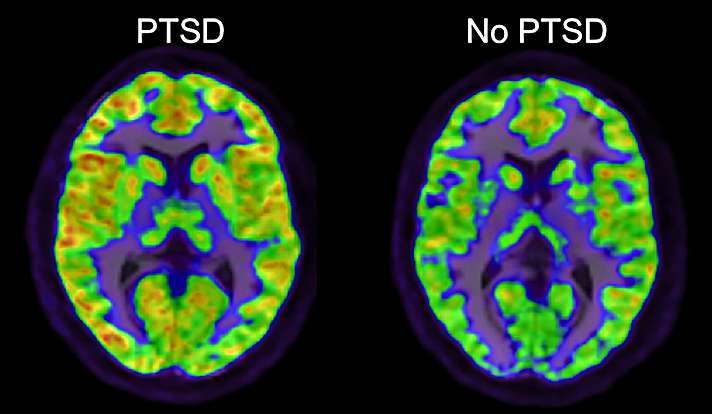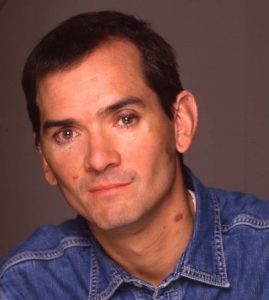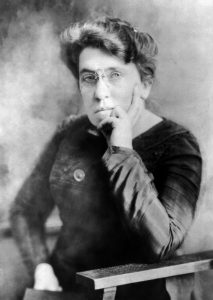Winner of the Fall 2018 StMU History Media Award for
Best Article in the Category of “Military History”
Best Article in the Category of “Science & Technology”
Charles Meyers, a Medical Officer, introduced the term “Shell Shock” to explain symptoms of Post Traumatic Stress Disorder (PTSD) displayed by military after combat in World War I (WWI). Soldiers often experienced symptoms including fatigue, tremor, confusion, nightmares, impaired sight, and impaired hearing. Meyers assumed that these symptoms were caused by the soldiers’ exposure to exploding shells, not necessarily the trauma they were witnessing or going through. In these years, symptoms of widespread PTSD were considered “weak” traits for soldiers by their colleagues and bosses. Even society as a whole started to view these symptoms negatively, which led to the destruction of their relationships after the Shell Shocked soldiers arrived home.1
Military gave Shell Shock victims no sympathy. When soldiers were dismissed from their duties, they were given labels such as “cowardice” or “emotionally weak.” These labels led to soldiers being targeted for abuse from their own side, as well as mock trials in which they were convicted. The pardons they received weren’t honorable, so they were often ashamed of their disorder, which led to more mental issues among the soldiers like depression, anxiety, and even suicide.2

New treatments flipped understandings of how World War I caused drastic changes in the behaviors of these men. Treatment for Shell Shocked victims before Arthur Hurst’s “miracle treatments” were very harsh, as they were often treated with Electroconvulsive Therapy, emotional deprivation, shaming, and solitary confinement. Some of the lesser treatments were hypnosis, massage, rest, and dietary treatments.3
Arthur Hurst primarily used occupational therapy to treat Shell Shocked patients, treating them as humanely and sympathetically as possible. This dignified care allowed for the increased numbers of “saved” soldiers, as they found ways to overcome the abuse and the labels given to them after their dishonorable discharges. Hurst’s treatments became iconic after the Newton Abbott’s Seale Hayne in Devon. Hurst’s approach allowed for 90% of Shell Shocked soldiers to be cured after only a single session.4

Modern day treatments, consist of therapy, as well as new medicines that aid in the control of the symptoms. According to Michael James, a pharmacist, there are Selective Serotonin Reuptake Inhibitors (SSRIs) that block the re-uptake of serotonin in the brain and help with sleep disorders, nightmares, and decreases intrusive thoughts. James also informed me that Serotonin Norepinephrine Reuptake Inhibitors (SNRIs) block the re-uptake of serotonin and norepinephrine in the brain which also decrease intrusive thoughts and provide aid for sleep disorders and nightmares.5
Hurst’s approach led to a change of heart and a consensus to the overall approach by society as a whole. Now, Veterans Affairs, also known as the VA, has a large program that provides aid to veterans with PTSD. However, this evolution of PTSD has not only been beneficial to veterans, but it has also allowed for a more diverse diagnosis of PTSD, in which it is more understood that other people, in addition to veterans, can also experience PTSD. PTSD can be caused from any sort of trauma including car accidents, violent crimes, and domestic violence. Individuals can even develop PTSD from having someone important abandon them as well. The DSM-5 has set a variety of symptoms for PTSD because just like any other disorder, it affects every individual differently. This document allows all individuals to gain access to the tools and help they need to recover from or live with PTSD.6

- Caroline Alexander, “The Shock of War,” Smithsonian Magazine, September 2010, https://www.smithsonianmag.com/history/the-shock-of-war-55376701/. ↵
- “Shell Shock,” BBC Inside Out, March 3, 2004, http://www.bbc.co.uk/insideout/extra/series-1/shell_shocked.shtml. ↵
- “Electroconvulsive Therapy: A History of Controversy, but Also of Help,” The Science Explorer, January 13, 2017, http://thescienceexplorer.com/brain-and-body/electroconvulsive-therapy-history-controversy-also-help; “Arthur Hurst: The Man Who Filmed Shell Shock,” BBC Radio 4, http://www.bbc.co.uk/programmes/articles/4VqPtrjsgcPKtgmYc2M5vXz/arthur-hurst-the-man-who-filmed-shell-shock. ↵
- “Arthur Hurst: The Man Who Filmed Shell Shock,” BBC Radio 4, http://www.bbc.co.uk/programmes/articles/4VqPtrjsgcPKtgmYc2M5vXz/arthur-hurst-the-man-who-filmed-shell-shock. ↵
- Email with Michael James, September 11, 2018. ↵
- Pete Walker, From Surviving to Thriving (Scotts Valley, CA: CreateSpace Independent Publishing Platform, 2013), 13-14. ↵



160 comments
Joshua Garza
I never had a clear idea of what shell shock was before reading this. This article defines it clearly and what it meant when someone was deemed stuck with shell shock. The description of the public humiliation brought to those with shell shock at the time only made these soldiers condition worse but what I found the most interesting is that Shell shock, although brutal was a stepping stone to reaching the modern day condition PTSD and its now revised and more effective methods of treatment.
Uzziyah Cohen
This article was incredibly detailed and provided an enormous amount of information relating to society’s view of Post Traumatic Stress Disorder (PTSD). The contrasts of past observations of PTSD as cowardice with the more accurate and current view of PTSD as a severe result of exposure to combat was extremely enlightening. Specifically, the reference to shell shocked syndrome as being viewed as cowardice or emotionally weak was thought invoking, to say the least.
Specifically, when the article refers to the development of treatment from World War I to the current era it is difficult to understand how anyone could not be intrigued by this illness. The challenges of dealing with the shellshocked coupled with the negative labels that veterans tolerated during past errors were accurately described in this article.
Diagnosis and treat of PTSD have improved exponentially in recent years; and this is best explained when the writer stated that: “The DSM-5 has set a variety of symptoms for PTSD because just like any other disorder… This document allows all individuals to gain access to the tools and help they need to recover from or live with PTSD.”As a disabled veteran with PTSD, I am entirely aware and extremely appreciative of how treatment and diagnosis of the illness can help promote a more manageable lifestyle.
Joshua Garza
I never had a clear idea of what shell shock was before reading this. This article defines it clearly and what it meant when someone was deemed stuck with shell shock. The description of the public humiliation brought to those with shell shock at the time only made these soldiers condition worse but what I found the most interesting is that Shell shock, although brutal was a stepping stone to reaching the modern day condition PTSD and its now revised and more effective methods of treatment.
Nadia Carrasco
Before reading this article I was not aware of the harsh realities people with PTSD go through. The article not only informed me about these obstacles people go through but how poorly they were treated by their own. I find it so surprising how active military could get dishonorable discharge but have no control over their mental conditions. I feel that those who are willing to put their life on the line to protect our country should be treated with the up most respect. The author certainly deserved this award as the article explained different aspects of PTSD while keeping the readers intrigued.
Samantha Luckey
Congratulations on being nominated for your article! This article was extremely interesting and moving, as well as educational. It was able to provide details about PTSD and its effects on an individual. Overall the writing was well done, and this author was able to engage the reader to continue reading on, as well as, informing the reader of important details regarding the traumatic stressful mentality that is PTSD. Great work!
Samire Adam
I remember having to do a presentation on PTSD and Shell Shock during World War 1 for my class in high school and I never realized how much was not known to our veterans. The fact that so many are ignorant to the pain and struggle thousands of soldiers go through is heart breaking and I hope with this article, it will open up a conversation throughout the world. The effects of PTSD and shell shock your article describes is very informative and impactful!
Alexandra Lopez
Before reading this article I did not know about the military dishonoring those who had PTSD because of Shell Shock. Those who have sacrificed their mental health and relationships for their country should not have been dishonored or considered weak. The article is well written and informed the reader about the past struggles soldiers would have to face when they came home. (reposted)
Rosa Castillo
PTSD is a sad reality of most of our war veterans and has proven to be caused by traumatic and stressful events while on duty. PTSD should be considered much more seriously that it has been previously. Congratulations on your nomination I appreciate your article for talking about and explaining The effects PTSD has on the individual. I learned a lot from this article about PTSD and the different stigmas around it.
Stephanie Nava
Very informative article!! Great job!! It is hard to come across an article that is interesting and informative at the same time. Overall, this article is well written and very informative. I never knew what shell shock and PTSD can do to the human brain. This article deserved a nomination. The pictures used were very impactful! They seem like they are from a horror movie. It is very scary to have to go through these experiences. I hope I never do.
Robert Rees
A brief but informative article. I never realized that I never knew who was responsible for changing the diagnosis of shell shock to PTSD. In hindsight I always viewed the matter as overtime our perceptions of the disease and its victims just changed, but I never stopped to think that a catalyst for this change was due to the actions of someone like Arthur Hurst. Overall this is a well written and informative article.